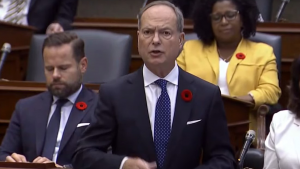°µÍø½ûÇøion industry analysts are often asked about the breakdown of construction dollars spent by the private sector versus the public sector. The Census Bureau’s monthly report makes that question easy to answer.
August’s put-in-place construction spending report for the U.S. from the says that the total dollar volume is +7.6% versus the first eight months (or two-thirds) of last year, with nearly matching strength from residential, +7.2%, and nonresidential, +8.0%.
The figures capture dollars spent as projects move from start to completion. They are analogous to work-in-process payments. They spread out the dollars as opposed to ‘starts’ statistics, which place the total value of a project in the month when it is initiated (i.e., when there is a groundbreaking).
For total construction dollars spent through August of this year, the contribution by the private sector was 78% compared with 22% for the public sector (i.e., approximately three-quarters to one-quarter).
For residential construction, the spending came almost entirely from the private sector, at 98.8%.
For , the private sector accounted for 61% and the public sector for 39% (i.e., three-fifths compared with two-fifths).
Where this question becomes most interesting, however, is for the various sub-categories of nonresidential construction activity, and that’s what we’ll look at next.
Where Private Dollars Dominate
Manufacturing: The financing of manufacturing construction work is virtually all (99.6%) grounded in the private sector. The August year-to-date change in dollar volume for industrial work was +24.2%.
Lodging: Travel accommodation construction spending almost entirely originates in the private sector (97.2% year to date through August). The year-to-date (YTD) dollar volume change in this sub-category was -5.7%.
Commercial (i.e., retail, warehouses, restaurants): Again, this sub-category depends almost exclusively on private financing, 96.1%. The dollar volume change for this type of work through August was -11.5%.
Office: Year-to-date private sector money allocated for office buildings has been 84.0% versus the public sector at 16.0%. The YTD dollar volume change has been +1.6%.
Power (not just electricity projects, but also oil and gas pipelines and storage facilities): The August YYD divide for power construction work was 85.8% private money to 14.2% public. The YTD dollar volume change was +12.6%, with the private portion at +10.0%, while the public share managed a more robust +30.9%.
Health Care: The divide for health care in August YTD was 80.1% private and 19.9% public (or four-fifths to one-fifth). The YTD dollar volume change was +6.1%, with the private portion at +6.6% and the public at +3.9%.
Where Public Dollars Dominate
Highway and Street: The Census Bureau’s PIP figure on ‘road’ construction in August YTD was comprised almost completely of public funding (99.3%). The YTD dollar volume change has been +7.3%.
Public Safety: This is a sub-category that, again, is almost all government-backed (98.7%). Its August YTD dollar volume change was +36.7%.
Waste Disposal and Water Supply: These are two more sub-categories almost fully paid for by the public sector (96.3% and 96.0%, respectively). The dollar volume changes YTD in August were +10.0% for sewage/waste disposal and +16.1% for water supply.
Educational: Interestingly, for school construction spending, the private versus public divide, at 19.5% and 80.5% respectively (or one-fifth to four-fifths) is almost exactly the opposite of what it is for health care. The YTD dollar volume change has been +9.1%, with private at +10.5% and public at +8.8%.
Transportation (air, land, water facilities, and passenger terminals): While spending in this sub-category comes mainly from the public sector (68.6% YTD in August), there is also a substantial private component (31.4%). The dollar volume change YTD has been +3.2%, made up of public and private funds with matching +3.2% gains.
Where There is a Rough Balance
Amusement and Recreation (stadiums, concert halls, studios): Through August, the private sector dollars going to ‘amusement and recreation’ projects, at 46.8%, was close to being the same as the public dollars, with a 53.2% share. The YTD dollar volume change was +10.7%, with the private slice at -2.0%, while the public piece of the pie was considerably better at +24.9%.
There are some smaller dollar-volume sub-categories that have been left out of the commentary so far: religious (all private), communication (nearly all private), and conservation and development (nearly all public).
A summary way of looking at is to break it down into five major components: residential, commercial, institutional, industrial, and engineering. (An additional condensing will see commercial, institutional, and industrial combined into total nonresidential building.)
Residential, commercial, and industrial projects are almost completely driven by private sector money. A major consequence is that the is a key determinant of whether such work will proceed or not. Plus, there are other factors to consider, such as office vacancy rates and capacity utilization rates.
Institutional and engineering construction have somewhat larger (i.e., 60% to 40%) public than private components in their spending budgets. Their key drivers are trends in demographics (i.e., the population growth rate and the altering age structure of the nation’s citizenry) and the availability of government money.










Recent Comments
comments for this post are closed